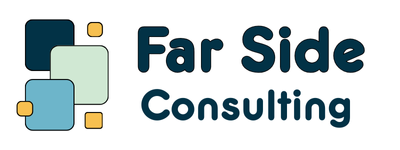Automating intake forms and lead management in your ABA website design can seriously streamline your operations. With automated forms, you collect client information quickly and accurately, reducing errors and saving time. This lets you focus more on client interaction rather than paperwork. Meanwhile, automating lead management guarantees you never miss a potential client, with instant notifications and follow-up reminders that keep communication flowing. These tools boost your conversion rates and enhance overall client experience. By understanding how to implement these automations effectively, you can transform your practice's operations and engagement strategies for the better. Curious about how to get started?
Importance of Automation in ABA

Automation in Applied Behavior Analysis (ABA) can markedly streamline your practice, making it more efficient and effective. Embracing automation isn't just about keeping up with technology; it's about transforming how you manage your workflow and client interactions.
By automating routine tasks, you free up valuable time that you can devote to your clients, fostering stronger relationships and more personalized care.
Think about the repetitive tasks that consume your day—data entry, appointment scheduling, or even follow-up reminders. These can be automated, reducing the chances for human error and ensuring consistency in your operations.
With automation, you can gather and analyze data in real-time, enhancing your decision-making process and enabling you to tailor interventions more swiftly.
Moreover, automation allows for better tracking of client progress and seamless communication among team members. It creates a more organized environment where everyone is on the same page, ultimately leading to improved outcomes.
Benefits of Automating Intake Forms
Streamlining your intake process can greatly enhance the efficiency of your ABA practice. Automating intake forms means you can collect essential client information faster and with fewer errors. Instead of relying on paper forms that may get lost or misfiled, you can create user-friendly digital forms that guide clients through the necessary questions. This not only saves time but also reduces frustration for both your staff and clients.
Moreover, automated forms can be customized to suit your specific needs, allowing you to gather the most relevant data for your practice. You can easily integrate these forms with your client management system, ensuring that all information is stored in one place and accessible whenever you need it.
Another significant benefit is the ability to track submissions in real-time. You'll know instantly when a new client has submitted their information, enabling you to prioritize follow-ups and appointments. This proactive approach to client engagement can lead to quicker onboarding and improved patient satisfaction.
Ultimately, automating your intake forms simplifies the process, allowing you to focus on what truly matters—providing quality care to your clients.
Streamlining Lead Management

Managing leads effectively is essential for the growth of your ABA practice. By streamlining lead management through automation, you can guarantee that no potential client falls through the cracks.
Here are three key ways to enhance your lead management process:
- Instant Notifications: Automation allows you to receive immediate alerts whenever a new lead fills out your intake form. This means you can respond quickly, showing potential clients that you're attentive and enthusiastic to help.
- Lead Scoring: With automated systems, you can prioritize leads based on their engagement or specific criteria. This helps you focus on the most promising prospects first, maximizing your conversion rates.
- Follow-Up Reminders: Set automated reminders for follow-ups with leads. This guarantees that you maintain communication and nurture those relationships, increasing the likelihood of turning inquiries into clients.
Enhancing User Experience
To truly enhance user experience, you need to focus on simplifying form completion, reducing response time, and personalizing interactions.
When users find it easy to navigate your site and receive quick responses, they're more likely to engage with your content.
Let's explore how these elements can transform the way visitors interact with your ABA website.
Simplifying Form Completion
Filling out forms can often feel like a chore, but it doesn't have to be that way. By simplifying form completion, you can create a more enjoyable experience for your users.
Here are three innovative strategies to enhance user experience:
- Smart Defaults: Use intelligent pre-fill options based on previous submissions. This saves time and reduces frustration, making it easier for users to complete forms quickly.
- Progressive Disclosure: Break down lengthy forms into smaller, manageable sections. Present only the most relevant questions at first, allowing users to focus without feeling overwhelmed.
- Mobile Optimization: Verify your forms are mobile-friendly. With more users accessing websites via smartphones, responsive design can make a significant difference in completion rates.
Reducing Response Time
After simplifying form completion, the next step in enhancing user experience is reducing response time. When you automate your intake forms and lead management, you can markedly cut down on the time it takes to follow up with potential clients. Instead of manually sorting through submissions, automated systems can instantly categorize and prioritize leads, allowing you to respond promptly.
Quick responses foster trust and show your commitment to client care. By minimizing delays, you not only improve user satisfaction but also increase the chances of converting leads into clients. Imagine how impressed potential clients will be when they receive immediate acknowledgment of their inquiries!
To make this happen, invest in automation tools that notify you of new submissions in real-time. Incorporate chatbots or automated email responses that provide instant replies, answering common questions while you prepare a more personalized follow-up.
Reducing response time isn't just about speed; it's about showing that you value your clients' time. By embracing automation, you streamline your operations and markedly enhance the overall user experience, making your ABA website a standout in the competitive landscape.
Personalized User Interactions
Personalized user interactions can greatly elevate the overall experience of your ABA website. By tailoring the experience to meet individual needs, you not only engage visitors but also encourage them to explore your services.
Here are three ways you can implement personalized interactions:
- Dynamic Content: Use automation tools to display content based on user behavior. For instance, if a visitor frequently checks your therapy services, show them related articles or testimonials.
- Customized Communication: Integrate chatbots that can greet users by name and ask specific questions based on their previous interactions. This not only makes them feel valued but also enhances the efficiency of your lead management.
- Feedback Loops: Encourage users to provide feedback through automated surveys. This allows you to gather insights on their experience and adjust your website accordingly, ensuring continuous improvement.
Reducing Administrative Burden

Reducing the administrative burden in Applied Behavior Analysis (ABA) practice is essential for ensuring that you can focus on what truly matters: your clients. By automating intake forms and lead management, you can streamline processes that often consume valuable time and resources.
Instead of manually collecting client information, you can implement online forms that automatically capture and organize data, reducing errors and improving efficiency.
With automated lead management, you can effortlessly track inquiries and follow-ups without drowning in paperwork or lost emails. This means you'll spend less time managing administrative tasks and more time engaging with families and caregivers.
Automation also allows for quicker response times, enhancing your professional image and client satisfaction.
Additionally, you can generate reports and analytics on client intake and conversion rates, giving you insights to refine your outreach strategies.
These improvements lead to a more efficient operation where you can allocate resources effectively, ultimately enhancing the quality of care you provide.
Integrating Automation Tools
Integrating automation tools into your ABA website design can transform how you operate.
You'll discover the benefits of streamlining tasks, explore key tools that fit your needs, and learn best practices for implementation.
Let's take a closer look at how these tools can enhance your efficiency and effectiveness.
Benefits of Automation
When you embrace automation tools in your ABA website design, you unfasten a world of efficiency and effectiveness.
By integrating these tools, you can markedly enhance your operations, making them smoother and more responsive.
Here are three key benefits you'll experience:
- Time Savings: Automation accelerates routine tasks, freeing up your time to focus on what truly matters—providing quality care and support to your clients.
- Improved Accuracy: Manual data entry can lead to errors. By automating intake forms and lead management, you minimize mistakes and guarantee that information is consistently accurate, leading to better decision-making.
- Enhanced Client Engagement: Automated follow-ups and communications keep your clients informed and engaged.
This proactive approach not only strengthens relationships but also encourages new leads to convert into clients.
Key Automation Tools
With automation tools at your fingertips, you can streamline your ABA website design and operation like never before.
First, consider using customer relationship management (CRM) systems like HubSpot or Zoho. These platforms help you manage leads efficiently, track interactions, and automate follow-ups, ensuring no potential client falls through the cracks.
Next, think about integrating form builders such as JotForm or Google Forms for your intake processes. These tools allow you to create custom forms that automatically collect and organize client information, saving you countless hours while minimizing errors.
You can even automate notifications to your team when a new form is submitted.
Don't forget about scheduling tools like Calendly or Acuity Scheduling, which can streamline appointment bookings. By automating this process, you'll reduce back-and-forth emails and free up time for what really matters—serving your clients.
Lastly, consider leveraging email marketing tools like Mailchimp or Constant Contact to automate your communications. You can set up drip campaigns to nurture leads and keep clients engaged with valuable content.
Implementation Best Practices
Successful implementation of automation tools can transform your ABA website design and operation, making it more efficient and user-friendly.
To achieve this, consider these best practices:
- Evaluate Your Needs: Start by identifying specific areas within your intake forms and lead management that can benefit from automation. Understanding your unique challenges will help you select the right tools.
- Choose the Right Tools: Research and select automation tools that align with your goals. Look for user-friendly options that integrate seamlessly with your existing systems, ensuring a smooth shift.
- Train Your Team: Once you've implemented automation, conduct training sessions for your staff. Ensuring everyone understands how to use the new tools will maximize their effectiveness and encourage collaboration.
Improving Client Engagement

Improving client engagement is essential for the success of your ABA practice, and leveraging automation in website design can make a significant difference. When you automate processes like scheduling, communication, and feedback collection, you create a more seamless experience for your clients. This means they can easily access the information they need, leading to increased satisfaction and loyalty.
Imagine a client visiting your site, instantly able to book an appointment or fill out an intake form without the hassle of back-and-forth emails. Automation keeps your clients engaged and informed, allowing you to focus on delivering quality care. By using chatbots, for example, you can provide immediate responses to common inquiries, ensuring that clients feel heard and valued.
Additionally, automated follow-ups can nurture relationships by reminding clients of upcoming appointments or offering resources tailored to their needs. This proactive approach fosters trust and encourages ongoing communication, making clients more likely to engage with your services.
Case Studies and Examples
Automation in website design isn't just a theoretical concept; it's been effectively implemented by various ABA practices, leading to remarkable results. By streamlining operations through automation, these practices have transformed how they manage client interactions and data.
Here are three compelling examples:
- Streamlined Intake Forms: One ABA clinic integrated automated intake forms directly into their website. This allowed new clients to fill out necessary information at their convenience, reducing the time staff spent on manual data entry and increasing accuracy.
- Lead Management Automation: Another practice adopted an automated lead management system. This guaranteed that every inquiry was promptly followed up, greatly improving conversion rates and client satisfaction. They saw a 30% increase in scheduled appointments within just a few months.
- Data Analysis: A third ABA organization implemented automated data collection tools for client feedback. This enabled them to quickly analyze trends and make informed decisions, ultimately enhancing their service offerings.
These case studies illustrate the tangible benefits of automation, showcasing how it can elevate your operations and client experiences.
Embracing these innovations can set your practice apart in a competitive landscape.
Future Trends in ABA Automation

The landscape of ABA practices is rapidly evolving, and staying ahead means embracing the latest trends in automation.
You'll find that integrating artificial intelligence into your operations can enhance client engagement and personalize services. Imagine chatbots guiding families through your intake process, answering questions instantly, and collecting essential data without burdening your staff.
Additionally, predictive analytics will play an important role in improving treatment outcomes. By analyzing historical data, you can anticipate client needs and tailor interventions accordingly. This proactive approach not only boosts efficiency but also enhances satisfaction for both clients and practitioners.
Moreover, automating follow-ups with clients through email or SMS can keep communication flowing seamlessly. You'll reduce no-shows, increase compliance, and maintain a strong relationship with your clients.
Lastly, consider the potential of integrating virtual reality for training and treatment. As this technology advances, it offers innovative therapeutic options and staff training solutions that were once unimaginable.
Frequently Asked Questions
What Types of Software Are Best for Automating Intake Forms?
To automate intake forms effectively, consider using software like JotForm, Typeform, or Google Forms. These tools simplify data collection, enhance user experience, and integrate seamlessly with CRM systems, saving you time and improving efficiency.
How Can Automation Improve Client Follow-Up Communication?
Automation improves client follow-up by sending timely reminders, personalized messages, and tracking interactions. You'll save time and guarantee consistent communication, enhancing client relationships and increasing satisfaction with your services. It's efficient and effective!
What Security Measures Protect Automated Intake Data?
To protect automated intake data, you should implement encryption, secure access controls, and regular audits. By prioritizing these security measures, you guarantee client information remains confidential and builds trust in your operational processes.
Can Automation Be Customized for Specific ABA Practices?
Yes, you can customize automation to fit your specific ABA practice. Tailoring intake forms and lead management processes to your needs not only enhances efficiency but also improves client engagement and overall service delivery.
How Does Automated Lead Management Impact Conversion Rates?
Automated lead management boosts conversion rates by ensuring timely follow-ups, organizing prospects efficiently, and personalizing interactions. You'll engage potential clients more effectively, transforming inquiries into appointments and ultimately enhancing your practice's growth and success.
Conclusion
Incorporating automation in your ABA website design can transform your operations for the better. By automating intake forms and lead management, you're not only streamlining processes but also enhancing user experience and reducing administrative burdens. This approach allows you to focus more on client engagement and less on paperwork. As you explore automation tools, you'll position your practice for future success and efficiency, ultimately benefiting both you and the families you serve.

